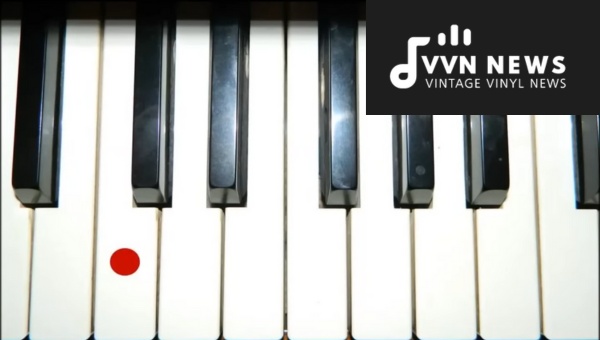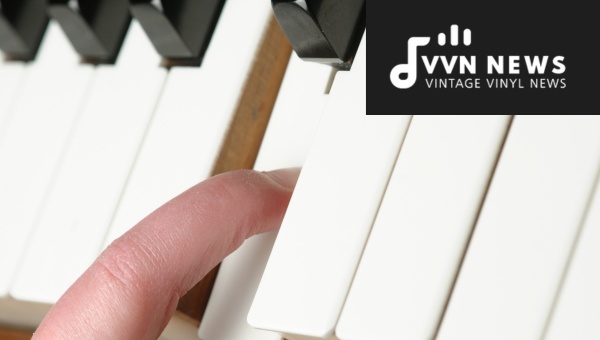As we delve into the world of music, one cannot overlook the significance of musical notes, the building blocks of melody and harmony.
Among these notes, the C music note holds a place of particular importance, serving as a fundamental anchor point in Western music.
It’s often where beginners start their musical journey, with its no-sharps-no-flats simplicity providing an approachable entryway into understanding scales and chords.
Learning about the C music note not only helps budding musicians grasp basic theory but also aids in developing an ear for pitch and tuning.
Whether you are just starting to learn an instrument or seeking to enhance your musical literacy, comprehending this core element of music notation is crucial.
So let’s unpack why the C note is so pivotal and how it functions within the broader tapestry of sound that weaves through our auditory experiences.
C Note Placement on the Staff
When you examine a piece of sheet music, you’ll notice the staff: five parallel lines where musical notes are placed.
The C music note finds its home here and can occupy different lines or spaces depending on the key and clef used.
In the treble clef, middle C sits just below the staff, often on a ledger line. For the bass clef, middle C is found just above the staff.
It serves as a reference point, connecting both clefs in what’s known as the “Grand Staff,” primarily used in piano music.
Quickly identifying the C note is essential for proficiency in sight-reading. Its location can signal which hand to use while playing instruments such as piano, where the left typically covers lower notes (like C in bass) and the right handles higher (like C in treble).
Also Read: A Flat Music Note [The Symbols Of Musical Notation]
C Note Visualization on Piano and Keyboard

When you approach a piano or keyboard, the C note is visually distinct, nestled just to the left of a set of two black keys.
With this pattern in mind, C can be promptly identified no matter where you look on the keyboard.
It provides a reference point that helps orient both beginners and experienced players alike.
Locating Middle C
To find Middle C, which is a common starting point for learning piano:
- Look at the center of your keyboard.
- Locate the brand name (often printed in the middle).
- Directly below it, identify the group of two black keys.
- The white key immediately to the left of this pair is Middle C.
Middle C serves as an essential landmark because it divides the keyboard into bass and treble regions.
Its frequency typically measures around 262 Hz, positioning it at an audible sweet spot for both tuning and range exercises.
Accidentals of the C Note
Diving into the world of accidentals can initially seem daunting, yet understanding these musical modifiers is essential to full musical expression.
When it comes to the C music note, there are two key accidentals to keep in mind: the sharp (C♯) and the flat (C♭).
Enhancing with Sharps
A sharp raises a note by a half step. In the case of C, this means that C becomes C♯, which sounds identical to D♭.
This enharmonic shift is crucial in certain scales and key signatures, such as A major or E major, where C♯ plays an integral role.
Softening with Flats
Conversely, a flat lowers a note by a half step. Thus, when you encounter C♭ in sheet music, play the note B naturally instead, as they are enharmonically equivalent.
This accidental is less common than C♯ but emerges notably in keys with numerous flats like G-flat major.
Remembering how these accidentals affect your beloved C note can unlock richer dimensions in your musical performance and understanding.
Also Read: A Music Note [Demystifying The Language Of Musical Notation]
C Note Representations in Various Clefs

Understanding how the C note is represented in various musical clefs can be likened to learning different dialects of the same language.
In essence, each clef offers a unique perspective on where the C note falls within the grand staff. Let’s explore these representations:
Treble Clef
The treble clef, also known as the G clef, is perhaps the most recognized symbol in music notation.
The C note appears on the ledger line below the staff when rendered in treble clef. It’s like a visitor that steps just slightly outside of a familiar home base.
Bass Clef
In contrast, the bass clef, or F clef, positions middle C on the ledger line above the staff.
Those who read bass clef often encounter this middle C as it serves as a bridge connecting higher and lower pitches harmoniously.
Alto Clef
The alto clef positions middle C right in its center, on the third line of the staff. Traditionally used for viola music and vocal scores, this clef presents a balanced view that feels “just right” for mid-range instruments.
Tenor Clef
Similar to the alto clef but shifted slightly higher is the tenor clef, where middle C appears on the second line from the top of the staff.
It’s a preferred notation for higher cello or bassoon parts where notes frequently hover around that mid-register area.
Mezzo-Soprano Clef
When you look at mezzo-soprano clefs, which aren’t commonly used today, middle C finds its place nestled on precisely the second line of the staff.
Soprano Clef
Even rare is the soprano clef – once standard for soprano voices – but now mostly a historical curiosity.
Here, middle C occupies itself, being placed on the bottom line of any given five-line musical stave.
Baritone Clef
Baritone clefs split their usage between two styles: one where middle C is found hovering above what would be considered ‘the top space,’ and another less common variant placing it firmly on what would be ‘the fourth line’ down from above.
For each representation of this elementary note, you’ll notice how its position changes relative to each specific musical context—emphasizing its versatility and universality across all manners of musical notation.
If you wish to visualize these placements, numerous resources are available online that feature detailed stave diagrams showcasing exact positions within each respective clefting context.
Also Read: A Sharp Music Note [Unlocking The Secrets Of Musical Notation]
Popular Scales Originating with C
When you begin to explore scales in music theory, the C Major scale is typically the first scale you learn.
Here’s why: on the piano, it is played using only the white keys, starting from C to C—an ideal introduction for novices.
Its structure adheres to a pattern of whole and half steps: whole, whole, half, whole, whole, whole, half.
Beyond its simplicity in terms of no sharps or flats, this diatonic scale also serves as a launchpad for other popular scales originating with the C note:
- C Natural Minor: Unlike its major counterpart, which emanates joy and brightness, the C natural minor scale offers a contrasting mood—solemn and contemplative. It follows a series of steps: whole, half, whole, whole, half, whole.
- C Harmonic Minor: Characterized by an exotic flair stemming from its raised seventh note (B natural), this scale has a unique step sequence featuring an augmented second interval between the sixth and seventh notes.
- C Melodic Minor (ascending): This intriguing minor scale switches its mood as it ascends and descends. Ascending it’s like this: whole, half, whole, whole, whole, whole, whole, whole, whole, whole, whole, whole, whole, whole, whole, whole, whole, whole. The descending is just like a natural minor, creating a duality in one single musical passage.
- Pentatonic Scales: Focusing on fewer notes for simplified melodic construction, the C major pentatonic omits the fourth and seventh degree, resulting in five notes all bearing consonant relationships with each other.
Each of these scales can carry a melody alone or build harmonic structures, leading to rich chord progressions that define a piece’s tonality.
Familiarity with these scales not only bolsters one’s skills in performance but also enhances improvisational abilities where the C note acts as both a home base and springboard into expressive musical storytelling.
Also Read: B Music Note [In-Depth Guide To Reading Musical Notation]
Modes Based on C Note

When delving into the intricacies of music theory, particularly the modal system, you’ll soon discover that modes based on the C note offer a fascinating avenue for exploration and creativity.
Modes are essentially scales that contain the same notes as a parent scale but start on a different degree.
Let’s dive into each mode built off of the foundational C note, appreciating their unique characteristics.
Ionian Mode (C Major Scale)
The Ionian mode is synonymous with the C major scale. It is as straightforward as it gets – no sharps or flats, just the white keys from C to C on your keyboard or piano.
Notes: C – D – E – F – G – A – B
Dorian Mode (Starting on D)
Initiating on D, the C Dorian mode, often associated with jazz and blues, maintains a minor feel due to its flat third but boasts a brighter sound with its natural sixth.
Notes: D – E – F – G – A – B – C
Phrygian Mode (Starting on E)
For an exotic flair, we turn to E Phrygian. This mode starts on E and features a flat second interval which yields a mystical and somewhat Spanish sound.
Notes: E – F – G – A – B – C – D
Lydian Mode (Starting on F)
Rising from F is the Lydian mode whose sharp fourth interval (B in this case) provides an airy lift—an intrinsic optimism—to any sequence in which it’s used.
Notes: F – G – A – B – C – D – E
Mixolydian Mode (Starting on G)
G Mixolydian descends from our beloved C major but introduces a flat seventh (F), creating a sound typical in rock and folk genres because of its dominant seventh chord structure.
Notes: G – A – B – C – D – E ‐ F
Aeolian Mode (Natural Minor Scale)
Aeolian, or the natural minor scale starting at A, gives us that quintessential minor key sensibility—sad yet full of depth and emotion. It consists purely of white keys like its relative major counterpart.
Notes: A ‐ B ‐ C ‐ D ‐ E ‐ F ‐ G
Locrian Mode (Starting on B)
Lastly, there’s B Locrian with both a flattened second and fifth interval, which makes it quite dissonant and tension-filled; this places it less frequently in compositions.
Notes: B−C−D−E−F−G−A
Understanding these modes rooted in the ever-reliable C note will immensely enrich your musical palette. You might start recognizing them underpinning genres that you love or even highlighting emotional moments within songs you’re drawn to.
Frequency Range of the C Music Note
Understanding the frequency range of the C music note is essential for both tuning instruments and sound engineering.
The middle C (also known as C4) is a key reference point, resonating at approximately 261.63 Hz.
This specific pitch serves as a foundation for standard tuning and is often the starting point for calibration in Western music tradition.
Frequencies double with each ascending octave, so the next higher C (C5) vibrates at around 523.25 Hz, while one octave lower (C3) hums at about 130.81 Hz.
Recognizing these frequencies helps musicians create harmonious and balanced performances and recordings.
Also Read: D Music Notes And Keys [Unraveling The Basics Of Guitar]
FAQs About C music note
What is significant about the C music note?
The C music note is fundamental because it’s the root note of the C Major scale which has no sharps or flats, making it a cornerstone for learning musical theory.
Can you start playing any instrument with the C note?
Yes, most instructors recommend starting with the C note as it helps you familiarize yourself with the concept of keys in their most basic form.
How does understanding the C note help with other musical elements?
Grasping the C music note can significantly simplify learning scales, chords, and intervals as it embodies one of the most natural tonalities in Western music.
Why is middle C important on the piano?
Middle C acts as a central navigation point on a piano, dividing treble and bass clefs and serving as a home base for orientation when learning to play.
Is middle C called something different in other countries?
Absolutely, middle C can be referred to by various names such as ‘C4’ due to its octave placement or even ‘Do’ in fixed-Do solfège systems used by some countries.
Conclusion
In essence, the C music note is the cornerstone of Western music theory—a beacon for beginners and a reference for the seasoned musician.
This unassuming yet critical pitch is where scales balance and chords are built, providing clarity amidst the complexities of musical structures.
Embracing its significance not only enhances our playing but enriches our appreciation of music’s universal language.
As you continue on your musical pursuits, remember that mastery of this simple but mighty note can unlock vast realms of harmonic expression.








